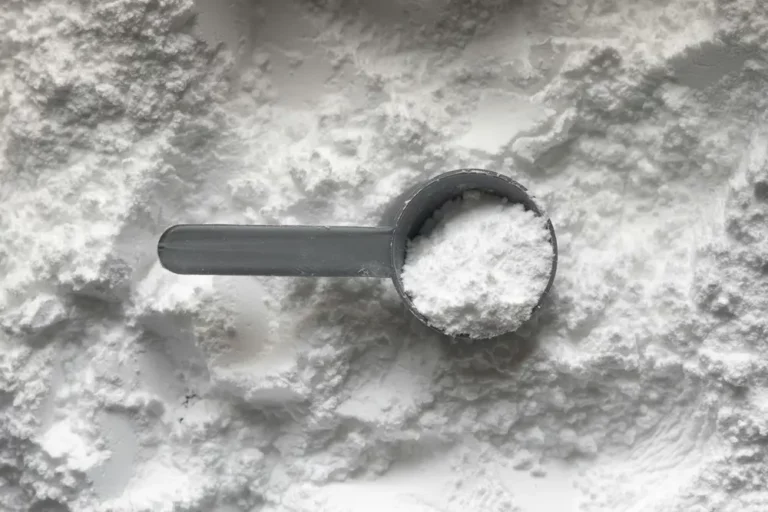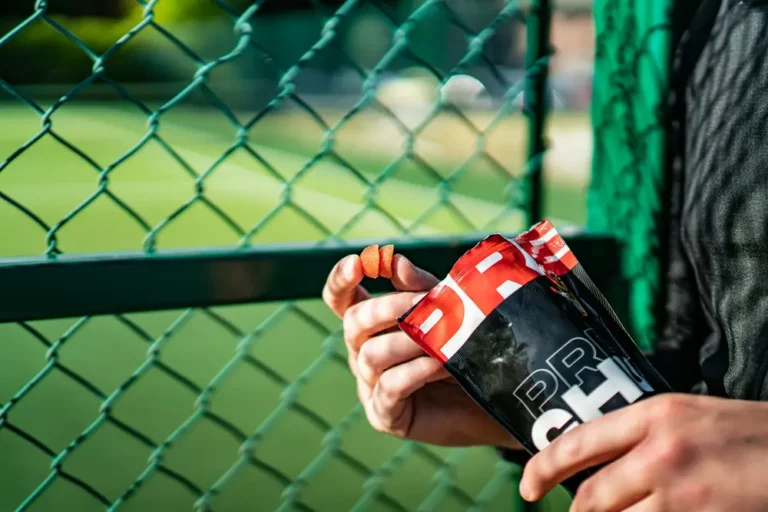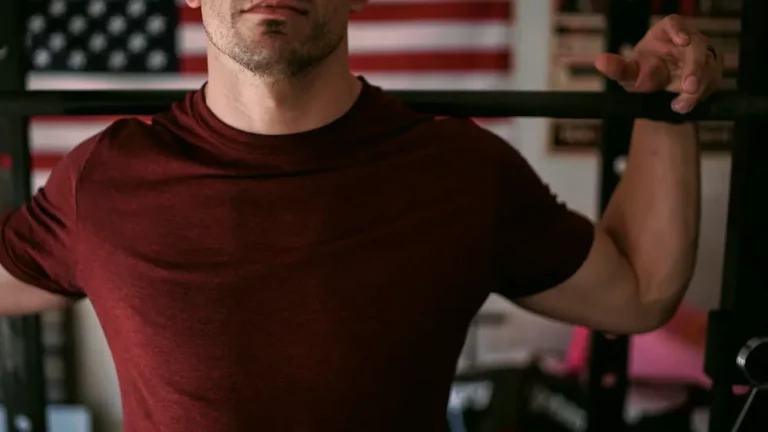Relief & Prevention for Shoulder Pain After Bench Press
I’ve been there, pushing hard in the gym, aiming to up my bench press game, when out of nowhere, shoulder pain decides to join the party. It’s frustrating, right? Especially when all you want to do is make gains, not nurse injuries. But don’t worry, you’re not alone in this. Shoulder pain after bench pressing is more common than you might think, and I’m here to shed some light on it.
Understanding why your shoulder screams for mercy every time you press can be the key to unlocking pain-free workouts. Whether it’s a sharp sting or a dull ache, getting to the root of the problem is crucial. Let’s dive into what causes this pesky pain and how you can say goodbye to it for good. Stick with me, and you’ll be back to benching without the ouch in no time.
Understanding Shoulder Pain Post-Bench Press
When I first started hitting the gym regularly, I couldn’t wait to see the gains from my bench press sessions. However, I quickly learned that gains could be accompanied by pains, specifically in the shoulder. It’s not just me; many gym goers experience this frustrating hurdle. So, let’s dive into understanding shoulder pain post-bench press, looking at common causes and the anatomy involved.
Common Causes
The mystery behind shoulder pain after bench pressing isn’t really a mystery once you break down the common causes. First and foremost is the anterior tilt of the scapulae. By allowing this tilt at the bottom of the bench press, the head of the humerus pushes forward, straining structures like the rotator cuff and biceps tendon. Adjusting the bar path to a diagonal trajectory rather than a linear one makes a world of difference here.
Another factor I’ve noticed is simply the volume of bench pressing. It’s tempting to think more is better, but the shoulder blades remain locked in retraction during the bench press. Without balanced exercise that promotes proper scapulohumeral rhythm, shoulder pain can become a nagging companion. Sometimes, the solution is as simple as reducing bench press volume and incorporating more overhead pressing into your routine.
Lastly, not warming up properly or effectively can lead to discomfort and pain. Incorporating exercises like scapular retractions, push-ups, and external rotation work into your warm-up routine can prepare your shoulders for the work ahead. I’ve found that soft tissue work done before the bench press can also significantly reduce pain.
Anatomy Involved
Understanding the anatomy involved in bench pressing can shed light on why these pains occur. The rotator cuff is a key player here, a set of four muscles that control the movement of your shoulder. Any strain or injury to these muscles during bench pressing can spell trouble.
The pectoralis major and minor, anterior deltoid, and the infraspinatus and teres minor muscles of the rotator cuff are all prone to overuse. Overworking these muscles leads to decreased circulation, scar tissue adhesions, and, subsequently, pain. Another common issue is the development of trigger points—taut, irritable bands within a muscle. These can cause not only local pain but also referred pain to other body parts.
The acromioclavicular (AC) joint also deserves mention. AC joint dysfunction, from inflammation or injury, can make bench pressing painful. It’s crucial to avoid exercises that exacerbate stress on this joint while focusing on movements that strengthen the area without overloading it.
Identifying the Type of Shoulder Pain
In my journey to understand the nuances of shoulder discomfort following a bench press session, I’ve learned that pinpointing the type of shoulder pain is pivotal. Recognizing whether the pain is acute or chronic and understanding where the pain is located can help us identify the underlying issues and address them effectively.
Acute vs Chronic Pain
When I first experienced shoulder pain after bench pressing, I was keen to determine whether it was an acute or chronic condition. Acute shoulder pain occurs suddenly and is usually the result of a specific injury or incident. It’s often sharp and intense but typically lasts for a short duration. In contrast, chronic shoulder pain develops over time, persisting for months or even years. This type of pain might start off mild and gradually intensify, or it could maintain a consistent level of discomfort.
Understanding the nature of my shoulder pain helped me focus on the right kind of treatment. For acute pain, immediate rest and ice were my go-to’s, aiming to reduce inflammation and prevent further injury. On the other hand, managing chronic shoulder pain involved a longer-term approach, including adjustments to my workout regimen, targeted exercises, and sometimes professional help to address underlying issues.
Pain Locations and Implications
Digging deeper into shoulder pain after bench pressing, I realized that the location of the pain could offer clues about its cause. Front shoulder pain often points towards issues with the pectoralis major or minor muscles or the biceps tendon. This was an eye-opener for me as it led me to reconsider my bench press form and the balance of my workout routine.
Pain in the shoulder’s outer side usually implicates the rotator cuff muscles, such as the infraspinatus or teres minor, which might be overworked or strained during improper bench pressing. Recognizing this pushed me to incorporate specific rotator cuff strengthening exercises into my routine.
Lastly, pain in the back of the shoulder could indicate problems with the posterior deltoid or issues related to the scapula’s positioning. For me, this was a signal to focus on my overall shoulder mobility and to ensure my scapulae were properly engaged during exercises.
Bench Press Technique and Shoulder Pain
As someone who’s spent a fair share of time in the gym navigating my way through various exercises, I’ve come to realize that technique plays a pivotal role in preventing injuries, particularly when it comes to the bench press. I’ve observed and experienced first-hand how minor adjustments in form can significantly affect shoulder health. Let’s delve into the importance of proper form and identify common mistakes that could lead to injury.
Proper Form Analysis
The bench press is a staple in many workout routines, yet it’s surprisingly complex, involving multiple joints and muscles working in tandem. I’ve learned that maintaining a proper form is crucial for avoiding shoulder pain. The correct technique involves several key components:
- Ensuring your grip width is just right – not too wide or too narrow. This helps in preventing unnecessary stress on the shoulder joints.
- Keep your feet planted firmly on the ground. This provides a stable base and helps engage your core and lower body for additional support.
- Retracting your shoulder blades and keeping them pinned against the bench throughout the lift. This action not only stabilizes your shoulders but also allows for a more effective engagement of the pectoral muscles.
- Aligning the bar path correctly is something I had to work on. The bar should touch down on the mid to low sternum area and be pressed up diagonally towards the shoulders. This trajectory ensures the most efficient and safest movement through the lift.
By analyzing and adjusting my form based on these principles, I noticed a significant reduction in shoulder discomfort. It’s not an overnight fix, but with patience and practice, improvements will follow.
Common Mistakes Leading to Injury
Throughout my lifting journey, I’ve identified several common pitfalls that many, including myself, have stumbled into. These mistakes often contribute to shoulder injuries during bench pressing:
- Overloading the bar too soon. It’s tempting to chase those higher weights, but without the proper foundation, this can lead to compromised form and an increased risk of injury.
- Ignoring the importance of a thorough warm-up. Dynamic shoulder stretches and light rotator cuff exercises can significantly enhance shoulder mobility and stability, reducing the risk of strains and tears.
- Forgetting to keep the elbows in check. Allowing them to flare excessively can place undue stress on the shoulder tendons and muscles.
- Lifting with ego instead of focusing on technique. It’s crucial to listen to your body and adjust the weights accordingly to maintain good form throughout the entire range of motion.
Addressing these mistakes was a game-changer for me. It required a combination of self-awareness, discipline, and, often, swallowing my pride to reduce the weight and focus on form.
Preventative Measures
When I first started lifting, the thrill of pressing heavier weights each session was intoxicating. But, after a couple of unwelcome shoulder aches, I quickly learned the importance of preventative measures. Let me share some tips that’ve made a big difference for me and can help you too.
Warm-Up Exercises
I can’t stress enough how vital a proper warm-up is. Gone are the days when I’d jump straight into bench pressing without giving my body a heads-up. Now, I always start with dynamic stretches focusing on my shoulders, arms, and chest. Here are a few exercises that made a world of difference for me:
- Arm circles: Start small and gradually increase the circle’s size to boost blood flow to your shoulders.
- Band pull-apart: A fantastic way to activate those all-important postural muscles and get the shoulder blades moving.
- Lightweight shoulder presses: Before hitting the heavyweights, I’d do a few sets with just the bar or light dumbbells to wake my shoulders up.
Remember, the goal here is to increase blood flow and prepare the muscles for the work they’re about to do, not tire them out.
Correct Lifting Techniques
Oh, the countless times I’ve seen folks at the gym compromise their form for the sake of lifting heavier. I was guilty of it, too, at first. But believe me when I say proper form is paramount. Here’s what’s worked for me:
- Grip width: Finding the sweet spot where my arms are neither too wide nor too narrow was the key to reducing unnecessary shoulder strain.
- Feet firmly planted: Stability starts from the ground up. Keeping my feet firmly on the ground not only improved my lift but also protected my shoulders.
- Scapular retraction: This was a game-changer. Keeping my shoulder blades pinched together throughout the lift provided a solid base and significantly reduced the load on my shoulders.
It’s not just about lifting; it’s about lifting right.
Equipment Considerations
Last but not least, let’s talk about equipment because, yes, it matters. I learned to:
- Choose the right bench: A stable, sturdy bench is crucial. Wobbly benches not only mess with your form but can lead to compensations that might hurt your shoulders.
- Use the appropriate bar: For me, switching between a standard Olympic bar and a more joint-friendly option like the Buffalo bar on heavier days helps distribute the weight more evenly and eases the pressure on my shoulders.
- Consider wrist wraps: Initially, I overlooked the importance of wrist stability. Wrist wraps helped keep my wrists in a neutral position, indirectly taking some strain off my shoulders.
Incorporating these preventative measures into my routine not only alleviated my shoulder pain but also contributed to a steadier progression in my bench press numbers. It’s about making those small adjustments that lead to big gains, both in strength and health.
Immediate Actions After Experiencing Pain
Experiencing shoulder pain after a bench press session can really throw off your rhythm and plans for future workouts. When it happens, it’s crucial to know what steps to take immediately to manage the pain and prevent further injury. Let’s dive into some immediate actions you can take.
First Aid Steps
Right off the bat, my first piece of advice is don’t ignore the pain. I’ve learned the hard way that brushing it off can lead to more severe issues down the line. Here’s what I do as soon as I feel that nagging pain in my shoulder:
- Rest: This might seem like a no-brainer, but it’s easy to underestimate. The moment you feel pain, stop your workout immediately. Continuing to push through the pain can aggravate the injury further.
- Ice: Applying ice to the injured area can help reduce swelling and numb the pain. I usually wrap a bag of ice in a towel and apply it to my shoulder for 15-20 minutes. Make sure not to apply ice directly to your skin to avoid frostbite.
- Compression: Using an elastic bandage or compression wrap can provide support and reduce swelling. Just make sure not to wrap it too tightly, as this can impede circulation.
- Elevation: If possible, try to keep your shoulder elevated above your heart. This helps reduce swelling by increasing the venous return of blood to the systemic circulation.
Following these steps has often helped me manage minor shoulder pains. However, there are times when professional medical attention is necessary.
When to Seek Medical Attention
Determining when to see a doctor can sometimes feel like a guessing game, but there are clear signs that indicate it’s time to get checked out:
- Persistent pain: If the pain doesn’t subside after a few days of rest and applying the first aid measures I’ve listed, it’s time to see a professional. Persistent pain could indicate a more serious injury that won’t heal on its own.
- Decreased mobility: If you notice a significant decrease in your shoulder’s range of motion or if moving your arm causes intense pain, these could be signs of a severe strain or even a tear in the muscle or tendon.
- Visible abnormalities: Look out for signs like swelling, deformities, or discoloration in your shoulder area. These symptoms might suggest a fracture or dislocation, requiring immediate medical attention.
- Associated symptoms: Sometimes, shoulder pain can come with other worrying signs, such as numbness, tingling down your arm, or weakness. These could indicate nerve involvement and should not be ignored.
Recovery and Rehabilitation
Recovery and rehabilitation are two sides of the same coin when it comes to shoulder pain after bench pressing. I’ve learned through experience and research that taking a structured approach to both can help not only alleviate pain but also prevent future injuries. Let’s dive into how to approach recovery and rehabilitation effectively.
Rest and Recovery Time
The first step in dealing with shoulder pain after bench pressing is to give your body the rest it needs. Rest is crucial for initiating the healing process because it minimizes further strain on your shoulder. It’s recommended to avoid any activities that exacerbate the pain and instead focus on recovery strategies. Skeletal muscles, including those in your shoulder, generally need 24 to 48 hours of rest for proper recovery. However, depending on the severity of the pain, I’ve sometimes had to take a few extra days off from the gym. During this period, it’s not just about avoiding the gym. I make sure to stay hydrated and sometimes apply ice to the affected area to reduce inflammation.
Rehabilitation Exercises
Once the acute pain has settled, rehabilitation exercises become your best friend. These exercises help restore strength and flexibility to your shoulder, reducing the risk of future injuries. I’ve found exercises like the pectoralis active massage particularly helpful for improving blood flow to the muscle tear, aiding in faster recovery. It’s generally advised to perform these exercises in short doses throughout the week, focusing on tender spots for 4-6 repetitions. Moreover, incorporating strengthening exercises for your rotator cuff tendons has been beneficial. Using resistance bands for eccentric shoulder external rotation and internal rotation side step exercises has provided constant tension, which is key for recovery and strengthening.
Gradual Return to Bench Pressing
Getting back to bench pressing after experiencing shoulder pain requires a gradual, patient approach. I’ve learned that jumping back in too soon or with too much weight can set back recovery and potentially cause further injury. It’s essential to start with light weights and focus on proper form, particularly ensuring that my elbows aren’t flaring out to avoid straining the shoulder again. I also incorporate a variety of chest exercises to ensure that I’m not overworking the same muscle groups. Exercises like bodyweight push-ups, TRX chest presses, and even dynamic chest work with medicine balls help me to slowly readjust to bench pressing without overwhelming my shoulder. Through this gradual approach, I’ve been able to return to my regular bench pressing routine while minimizing the risk of re-injury.
Alternative Exercises During Recovery
As I navigated my way through shoulder pain recovery, I found that keeping active was crucial, but picking the right exercises mattered even more. It’s important to know that not all hope is lost for maintaining upper body strength, even when the bench press is temporarily off-limits. Here’s where safe alternatives come into play.
Safe Alternatives to Bench Press
When bench pressing was a no-go due to shoulder pain, I turned to exercises that allowed for continued strength training without exacerbating the injury. Here are a few I found particularly helpful:
- Dumbbell Floor Presses: These limit the range of motion, alleviating stress on the shoulder joints.
- Cable Flys: Offering a different angle and resistance, they allow for focused chest engagement without the heavy load on the shoulders.
- Seated Rowing: This exercise helps balance the chest workouts by strengthening the upper back and improving posture.
Incorporating these into my routine helped maintain muscle activity and even address some imbalances that the standard bench press might have been exacerbating.
Modifying Workout Routines
Adjusting my workout routine was not just about swapping out exercises; it was about rethinking how I approached strength training altogether. Modifying workout routines meant focusing on:
- Decreasing Weights: It was a bit humbling, but reducing the weight allowed me to maintain form and take the unnecessary strain off my shoulders.
- Increasing Reps: With lighter weights, I bumped up the reps to maintain intensity without the added stress.
- Incorporating Rest Days: Recovery isn’t just about what exercises I do; it’s also about giving my body the time it needs to heal. Strategically placed rest days became a cornerstone of my routine.
Adjustments like these ensured that I stayed active and engaged with my fitness goals while navigating shoulder pain recovery. Keeping the focus on what my body could handle rather than what it couldn’t make all the difference during this time.
Understanding and Addressing Chronic Shoulder Issues
I’ve shared quite a bit about tackling shoulder pain after bench pressing—from immediate actions to long-term prevention strategies. Remember, it’s crucial to listen to your body and not brush off any discomfort.
Incorporating a variety of exercises, focusing on both push and pull movements and not skipping on those stretches and strengthening routines can help keep your shoulders healthy. And let’s not forget the importance of regular check-ins with a physical therapist to keep everything in check.
By staying mindful of our training habits and prioritizing recovery, we can continue to enjoy our bench press sessions without the nagging worry of shoulder pain holding us back. Here’s to strong and healthy shoulders!
FAQ – Frequently Asked Questions
How long should I rest my shoulder after experiencing pain from bench pressing?
The rest period depends on the severity of the pain. Mild discomfort may require a few days off, while more significant pain might need a week or more. Listen to your body and consult a healthcare professional if the pain is persistent or severe.
When should I see a doctor for shoulder pain after bench pressing?
You should see a doctor if the pain is severe, doesn’t improve with rest, is accompanied by swelling, redness, or a loss of range of motion, or if you suspect an injury. Persistent or recurring pain should always be evaluated by a healthcare professional.







